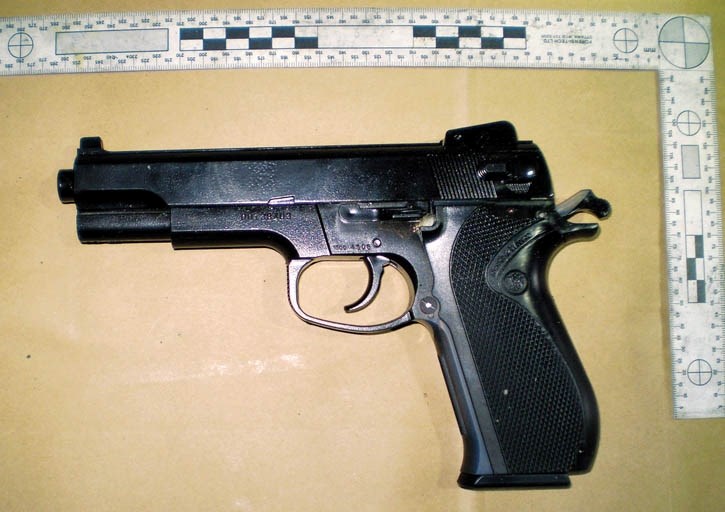When a series of armed robberies resulted in a man being shot and killed on a Canmore street, Jan. 10, the fact the suspect was wielding a replica weapon is an example of the difficulty police officers face in the line of duty.
Jean Steven Boucher, 62, a suspect in three Canmore armed robberies committed between Jan. 8 and 10, was stopped by RCMP in front of the Scotiabank on Railway Avenue. Boucher exited his vehicle with a weapon in hand and, according to a witness, fired a couple of shots before an RCMP member shot him. He was transported to Canmore Hospital, where he was pronounced dead.
Boucher, a Canmore resident, was identifed by ASIRT (Alberta Serious Incident Response Team) as the man killed in Canmore. ASIRT is investigating the entire incident – including whether Boucher was responsible for all three armed robberies.
ASIRT executive director Clif Purvis said the medical examiner has sent away toxicology tests on Boucher, but those results will take some time to complete. Asked if Boucher left any indication, such as a note, as to why he took the actions he did, Purvis said he cannot comment at this time.
“In this situation, certainly that is one of the things we would look into; to determine if he had made any utterances to anyone,” Purvis said. “In this case, I am not able to comment on what his motivation was.”
Not a lot of information surrounding the investigation is yet available, but RCMP spokesman Sgt. Patrick Webb of Calgary did confirm that Boucher is the father of an estranged son, who is a serving RCMP member.
Webb did say, as well, that a replica Smith & Wesson handgun like Boucher had, which is illegal in Canada, must be treated as a deadly weapon by police. Police officers, he said, are not trained to make an on-scene deliberation as to whether or not a weapon is a replica, or a fully deadly model.
A long-time RCMP veteran himself, Webb said he would not be able to distinguish a replica from a real weapon. “The thing is, if you have a replica hanging on a wall, it’s not a problem. But if you hold up a convenience store with one, it’s a problem. If you take a baseball bat to a ball game, nobody has a problem with it, but if you have one at a bar fight, it’s a weapon.
“It comes down to the question of what you are doing with it. The basic premise is if whoever is using it expects it to be treated as a real weapon, it will be. It makes the whole situation difficult.”
In the end, said Webb, if somebody shows up at a crime scene with a replica weapon hoping to lead someone to believe it’s real; it’s real and will be treated so by police.
And depending on circumstances, deciding whether a weapon is real could be made even more difficult in low light conditions, in wind, or when it’s in somebody’s hand. “No law enforcement officer can afford to guess,” he said. “If you think it’s a replica and it’s not, it’s then a very, very serious situation. You have to treat every weapon as a real one.”
Clouding the issue further, especially in the United States, said Webb, is the use of deadly weapons which are painted to look like toys. At this time, handguns and assault rifles can be purchased with paint schemes which can make them look more like a replica than the real thing.
Rather than the fairly standard-looking blue, black or stainless steel weapons, some can now be purchased, or altered, to appear in pink, with flowers or logos on them. For example, a Sig Sauer automatic handgun could be had (production was halted in 2008) with a hot pink slide and a Hello Kitty logo and Swarovski crystal set into the grip.
“Just do a website search for pink coloured handguns,” said Webb. “In the U.S., some criminals think it could cause a police officer to hesitate when one is seen, which reinforces the idea that you can only go on what you believe to be true, not what you see.”




